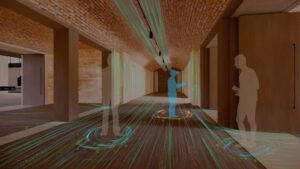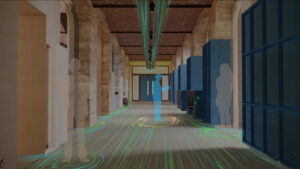Waterfall N
Zhu Haixia, Wenyun Deng, Nicole Liu, Zihan Yuan, Yingxuan Wang, Peerseas Christou
Waterfall N is interactive walls that will be integrated into the Edinburgh Futures Institute (EFI) building. In this project, we want to bring a sense of vitality to this future-driven institute and also create a space that encourages people’s interaction both on-site and offline, allowing visitors to the Institute to have a sense of each other's presence regardless of their spatial distance.
We chose waterfall as the main element because we believe that a building is not limited to its physical forms, it can have a life that grows and changes based on the environment and human activities around it, reflecting information it catches. And we want to bring this to the EFI building because EFI is a future-facing institute that focuses on solving real-world problems by using data, technology and collaborating with people. Besides, the current long-last pandemic changes our relationship to buildings and the way we connect with people. Technologies offer us alternative ways to keep relationships and connections, but the experience of connection and sense of community is still weak. So we also considered how to improve this experience of connecting with each other, people online and on-site, and with their surroundings.
Project Developing
Ideation

Idea Developing
Our idea started from using sound as the medium to generate interaction effects, making people online and offline create a kind of music when their routes in the space across. The combination of sounds in the space creates a feeling of interactions and the existence of people’s activities.
And then we had the idea about using projection of imagery of people both in real space and VR to act as interactions. At last, to think about adding more functions in the space for people, we settled on the idea to use waterfall as a both physical and virtual installation to display flow of data, offering rich interactions for people both online and offline to search, gain and upload information.
Storyboard

Interaction Process in the Building
According to the building model and floor plan, we chose several spaces to build this waterfall system. These walls are mainly set up in the south entrance, the connecting corridor, and the stairs on both sides, creating a whole water system net that runs inside the Institute. When people walk in the space, in both virtual tours and real visiting, their steps on the 'water' create ripples in the room. The different visitors are distinguished by different colour effects. When they touch the projected fountain on the wall, it also generates ripple effects, and if their touches are long enough, they will trigger the information presenting that is related to this building. The person in the room could interact with the information flow and exchange information with it.
Prototyping & Testing
We used VR glasses Oculus Quest to build the interior structure of the corridor, and used the multibrush software to try different effects of the waterfall and the interaction of water ripples on the ground when people online and offline come across each other.
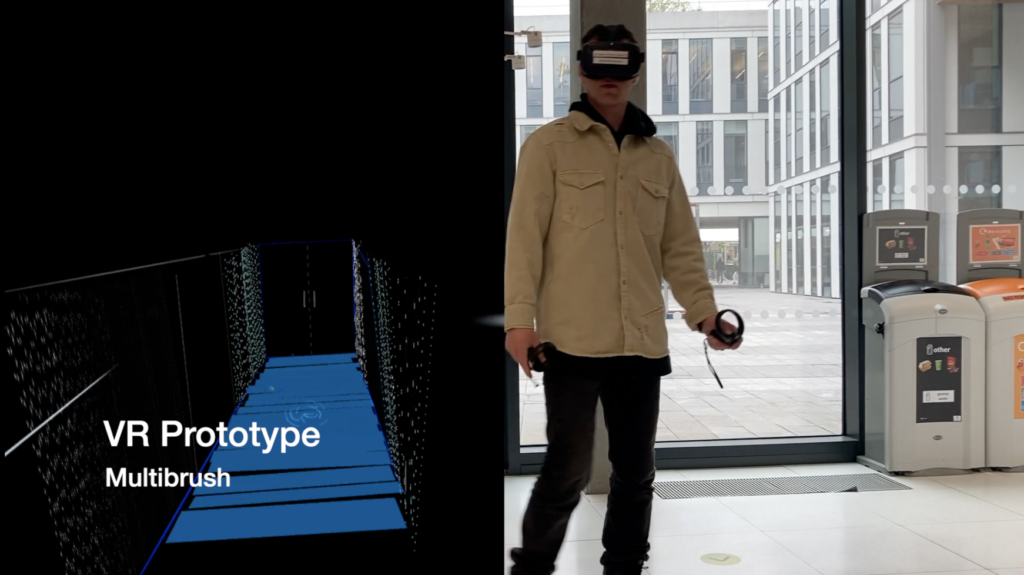
VR Experiments
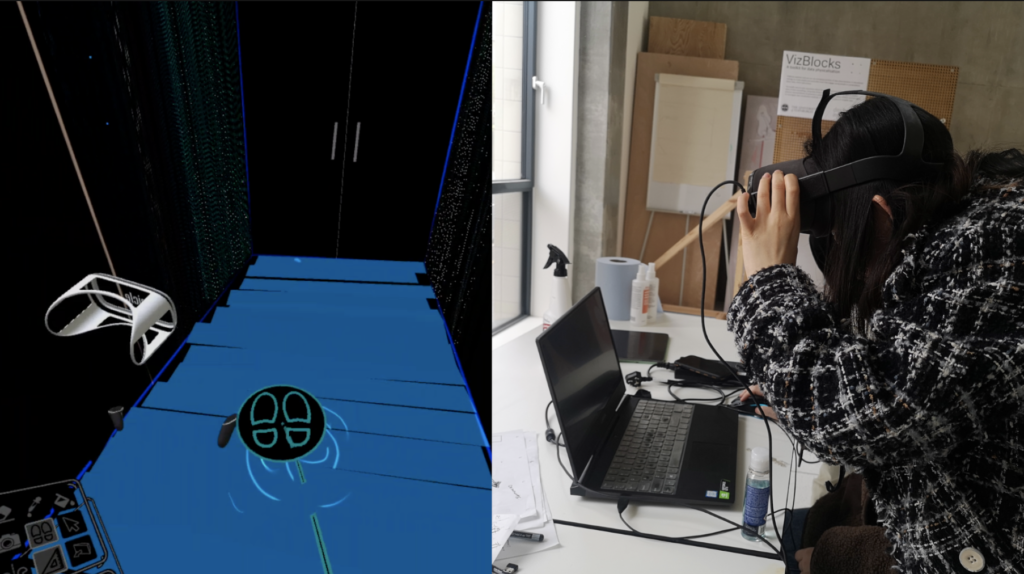
VR Experiments
In this process, we realized that when users interact with waterfalls, they will be attracted to stop in the corridor, so the user interaction areas should avoid the doorways to avoid problems such as congestion that affect the user experience. In addition, given health and hygiene concerns, we think it's better to adopt a way that could auto-recognize visitor’s gestures instead of touching the wall to interact with waterfalls.
In terms of the overall visual effects of the waterfall, we believe that in addition to aesthetics, we should have a stronger interaction with the user, such as the density of the water flow to reflect the number of visitors in this area, and rely on the recognition of the visitor's facial micro-expression to show different colours of ripples to express the user's emotions.
Technology
We use the VR device to find out where people are in the building online, and the distance sensors to find out where people are offline so that their distance in the 'same space' can be calculated. A physics engine is used to simulate real water currents that are projected onto the wall and will change depending on the distance between people and the wall, enabling ripples to be created when the distance is close enough.
Maybe facial recognition technology could be used in this project, to avoid potential ethical problems, we chose to recognize some basic expressions and would not try to get further information. After recognizing people's expressions, the colour of the 'waterfall' will change to warm when they are happy and expansive and change to cold when they are depressed or unhappy.
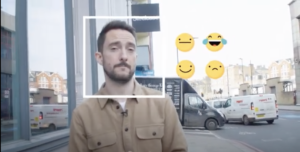
https://www.youtube.com/watch?v=1jKAweaCDUA
Final Results
The installation is mainly set up in the south entrance, the connecting corridor, and the space around both side stairs. The corridor is the main area where people can interact with the installation,because the corridor goes through and connects different areas of the building,which is very conducive to the setting of the waterfall installation: to create a whole visual system that runs inside the Institute.
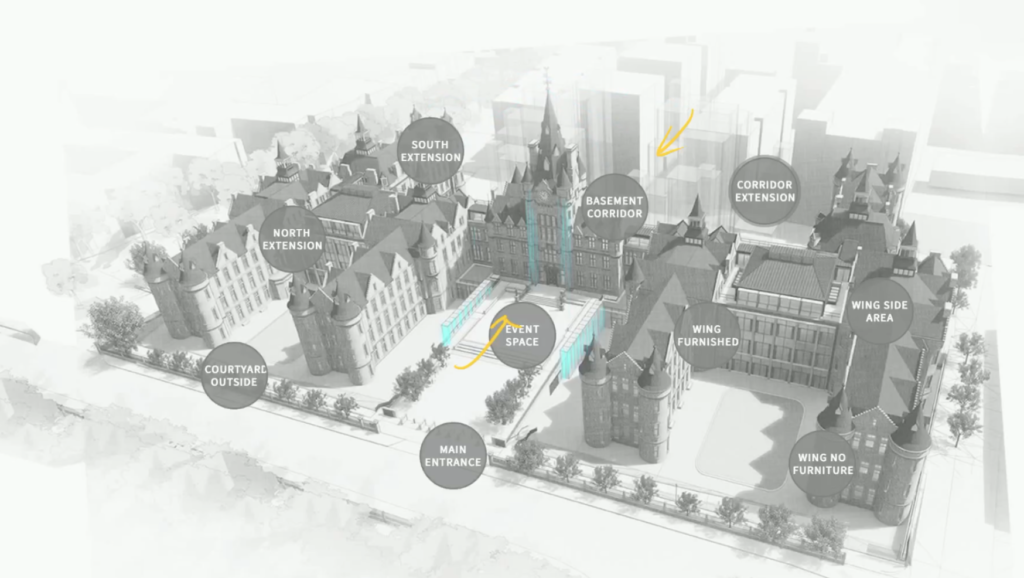
Where Waterfall Locate
When people enter the building,from the main or south entrance, the sensors at the entry will count the number of visitors that come into the building and catch their emotions. As the number increases,the water flows will be more obvious. And we made the colour of the waterfall change according to visitors' emotions because we want to visualize this interaction between people’s emotion and space, and how this can change the atmosphere inside it.
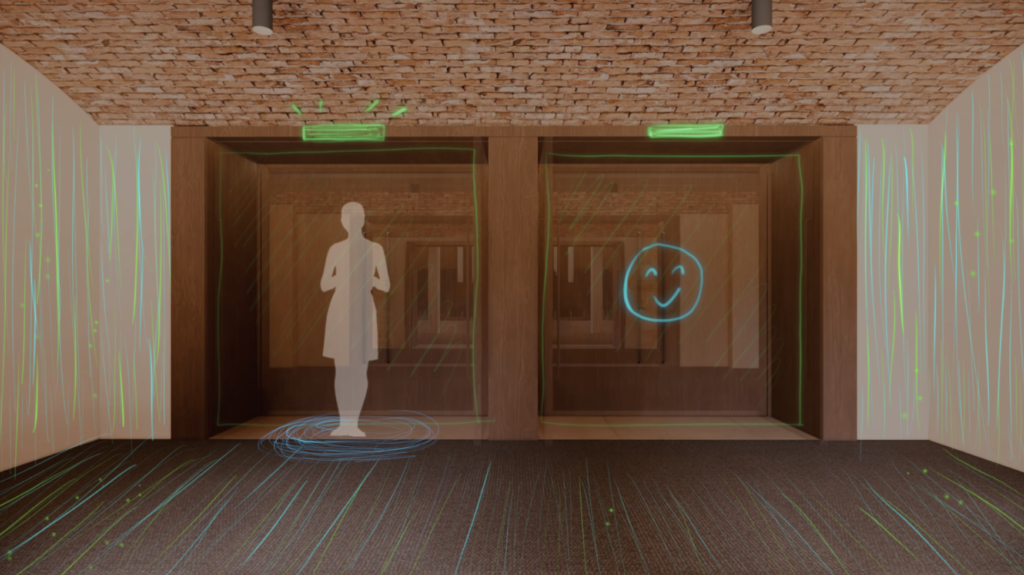
Recognize people's Emotion: Happy/Delight
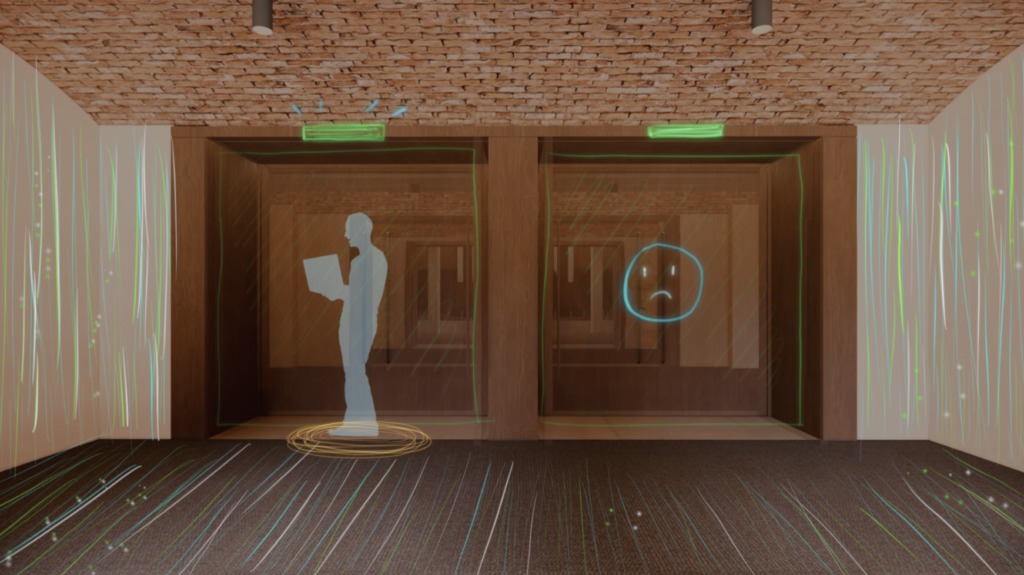
Recognize people's Emotion: Depressed/Worried
Besides, online and offline visitors’ steps will create water ripples on the floor, which are distinguished by different effects, so that visitors can sense the connection between each other.
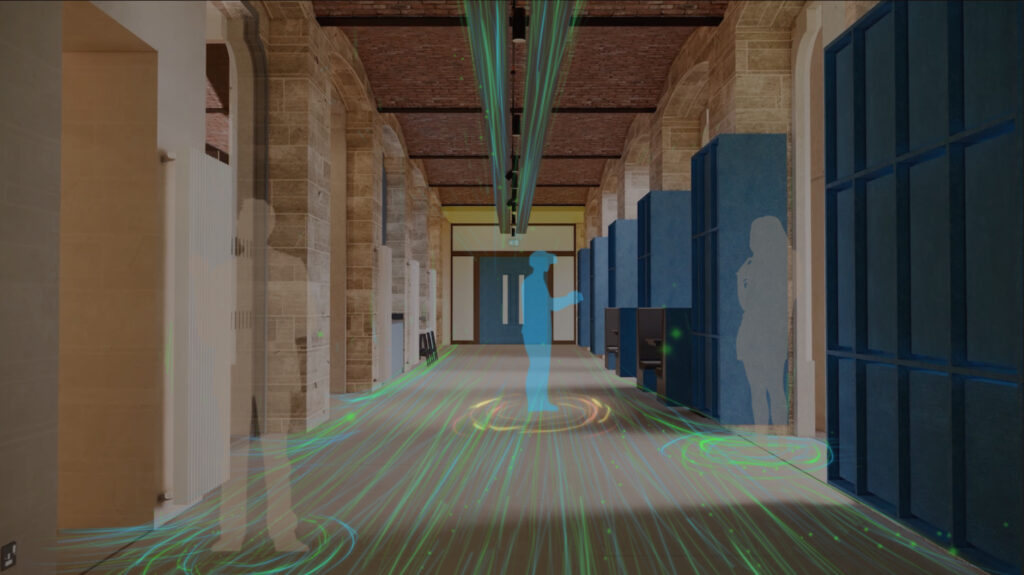
A scenario in the building
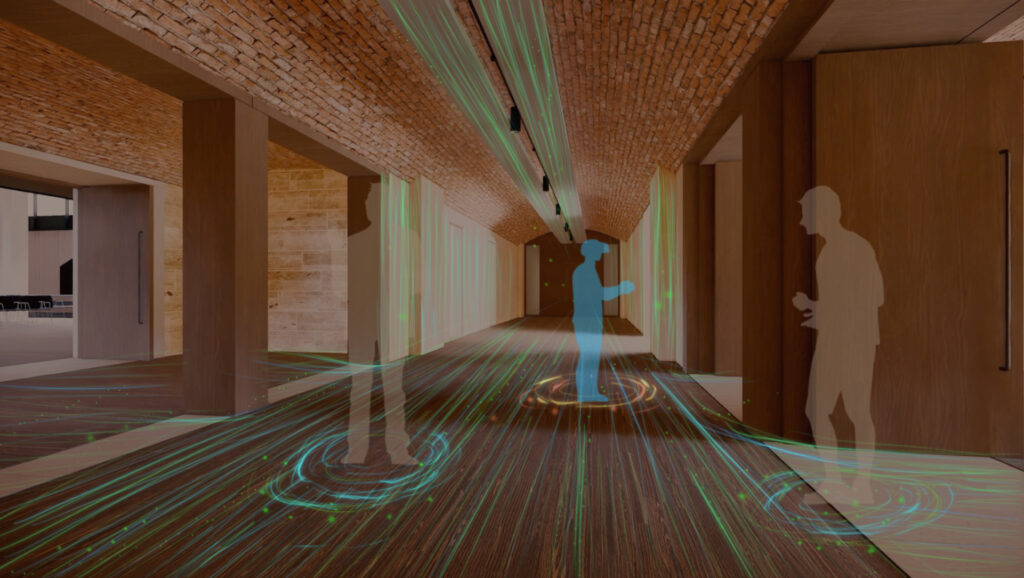
A scenario in the building
Reflection and Future
In this workshop, we imagine the potential roles that a building can be and the multiple experiences visitors can have in both virtual and physical environments. But given the limited time, our idea is initial and we believe further considerations can be explored.
The story of the building, for instance, was also part of our consideration in the initial process as it is one part of this building’s energy, but we didn’t have enough time to dig inside and learn more.
And thinking about the multi-function of the space, we reflect that more functions could be added to the “N” wall in future like an event atmosphere could be designed and the whole waterfall could display different feelings reacting to special events from the Institute, offering a special feeling of belonging or celebration.
The design for the sound in the room could also be considered, bringing a unique identity to the members of this shared space. Also, the implementation of the notion of time and making the waterfall look different at different times of the day could be explored, further bringing an atmosphere of change and liveness.
References
http://www.danielcanogar.com/work/waterfall
https://redpaperheart.com/work/expressionwall

